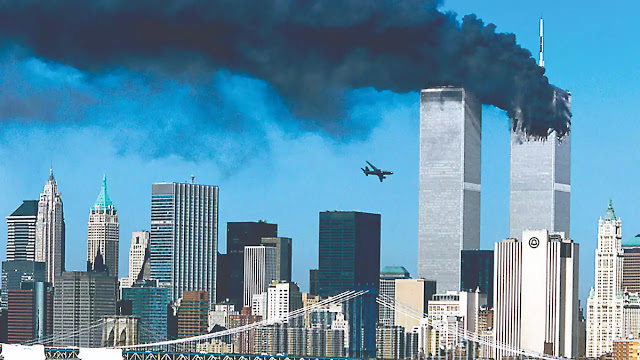 |
| 9/11 attack |
September 11, 2001, was the eleventh day of the eleventh month. It was also the twelfth anniversary of the September 11th attacks on the United States. On that day, the world experienced a coordinated series of terrorist attacks on major landmarks across the United States. These attacks resulted in the highest number of civilian deaths and the greatest destruction in history. This article seeks to provide an in-depth look into the events leading up to 9/11, its effects, and the consequences.
Introduction
The September 11 attacks (also known as the 9/11 suicide
attacks) was a four-pronged suicide bombing campaign conducted by the Al-Qaida
terrorist group on September 11th, 2001, on the streets of the United States.
Table of Contents
- Background
- Overview of Al-Qaeda
- The motive behind the attacks
Timeline of the
Attacks
- Coordinated Strikes
- Targeted Locations
Casualties and Impact
- Loss of Life
- Economic Impact
Investigation and
Perpetrators
- Identification of Culprits
- Global Response
Security and Policy
Changes
- Aviation Security Enhancements
- International Policy Shifts
Background
Overview of Al-Qaeda
 |
| Al-Qaeda |
Al-Qaeda (sometimes abbreviated as AQIM) is a hardline Islamic terrorist organization. Founded in late 1980s by the Pakistani-born al-Qaeda leader, Osama bin Laden, the group's ideology revolves around jihad against both the West and moderate Islamic states.
The motive behind the
Attacks
Al-Qaeda's motivations for the September 11, 2001 attacks were rooted in their desire to challenge Western influence and to spread their radicalized ideology.
Timeline of the
Attacks
Coordinated Strikes
On September 11, 2001, the United States airline American
Airlines Flight 11 made an emergency landing on the north tower of World Trade
Center at approximately 8:46 AM. United Airlines Flight 175 made a landing on
the south tower at approximately 9:03 AM. At 9:37 AM, American Airlines Flight
77 crashed into the Pentagon. At 10:03 AM, United Airlines Flight 93 crashed
into Pennsylvania after passengers attempted to regain control of the aircraft.
Targeted Locations
World Trade Center, New York City
Pentagon, Arlington, Virginia
United Airlines Flight 93 targeted the U.S. Capitol or the
White House.
Casualties and Impact
Loss of Life
Total fatalities: 2,977 innocent lives lost.
Injuries: Thousands were injured, both physically and
emotionally.
Economic Impact
Estimated cost: Over $10 billion in infrastructure and
property damage.
Global financial markets were significantly impacted.
Investigation and
Perpetrators
Identification of
Culprits
Al-Qaeda claimed responsibility for the attacks.
Osama bin Laden has been found to be the one responsible for
the attacks.
Global Response
The U.S. led a global coalition against terrorism.
War on Terror initiated, focusing on Afghanistan (Operation
Enduring Freedom).
Security and Policy
Changes
Aviation Security
Enhancements
Strengthened airport security measures worldwide.
The establishment of the Transportation Security
Administration (TSA) in the U.S.
International Policy Shifts
Enhanced intelligence sharing among nations.
Implementation of anti-terrorism legislation globally.
Pros and Cons
Pros
Increased awareness of national and global security.
Significant advancements in counter-terrorism strategies.
Cons
Loss of innocent lives and economic downturn.
Erosion of civil liberties due to increased security
measures.
FAQs
Q1: What were the
long-term consequences of the 9/11 attacks?
The long-term consequences included a reshaping of global
security policies, increased awareness of terrorism, and a focus on
counter-terrorism efforts.
Q2: Did the 9/11
attacks lead to changes in aviation security?
Yes, the attacks prompted significant changes in aviation
security, leading to stricter measures and the establishment of the TSA.
References
The National Commission on Terrorism Attacks on the United
States (2004). the 9/11 Commission Report. W. W. Norton & Company.
Wright, L. (2006). LOWING TOWNSHIP: THE ROAD TO 9/11 AND
AL-QADHAIST Alfred A. Knopf.
Certainly! Here's a
simple table summarizing the 9/11 attacks:
| Event | Time | Location | Outcome |
| First Plane Crash | 8:46 AM | North Tower, World Trade Center, NYC | American Airlines Flight 11 crashes into the tower |
| Second Plane Crash | 9:03 AM | South Tower, World Trade Center, NYC | United Airlines Flight 175 crashes into the tower |
| Pentagon Attack | 9:37 AM | The Pentagon, Arlington, Virginia | American Airlines Flight77 crashes into the Pentagon |
| United Airlines Flight 93 | 10:03 AM | Shanksville, Pennsylvania | Passengers thwart hijackers; plane crashes into a field |
- The 9/11 attacks stand as a somber and haunting chapter in modern history, casting a profound and indelible mark on the world. The magnitude of this tragedy ignited a collective global response, forming a united front against terrorism.
- This event acted as a catalyst, prompting a fundamental reshaping of policies and perceptions on security, not just in the United States but worldwide.
- In the face of this tragedy, the world learned a crucial lesson: the paramount significance of vigilance, cooperation, and peace.
- It reminded us that our collective strength is in unity and determination to safeguard the values of humanity against any threat.
- As we remember the lives lost and the scars left behind, we are called to strive for a future where tolerance, understanding, and peaceful coexistence prevail over hatred and violence.
- The memory of 9/11 serves as a perpetual reminder of the imperative to uphold these ideals in our global society.







0 Comments